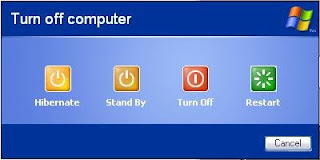Open regedit ( click on start > run. Then type in regedit), create a key as shown below, "HKEY_LOCAL_MACHINE\SOFTWARE\Policies\Microsoft\Windows\System\Shutdown". Then under this key create a dword value "ShowHibernateButton" and set it's value to 1 as shown "ShowHibernateButton" = dword:00000001 .

Rejoice now you can just check out your work by jumping on to the shut down screen and notice the change.
Now you will see four buttons appearing on your shut down screen. Now you will not have to bother your finger ever time you put your PC on hibernation.





